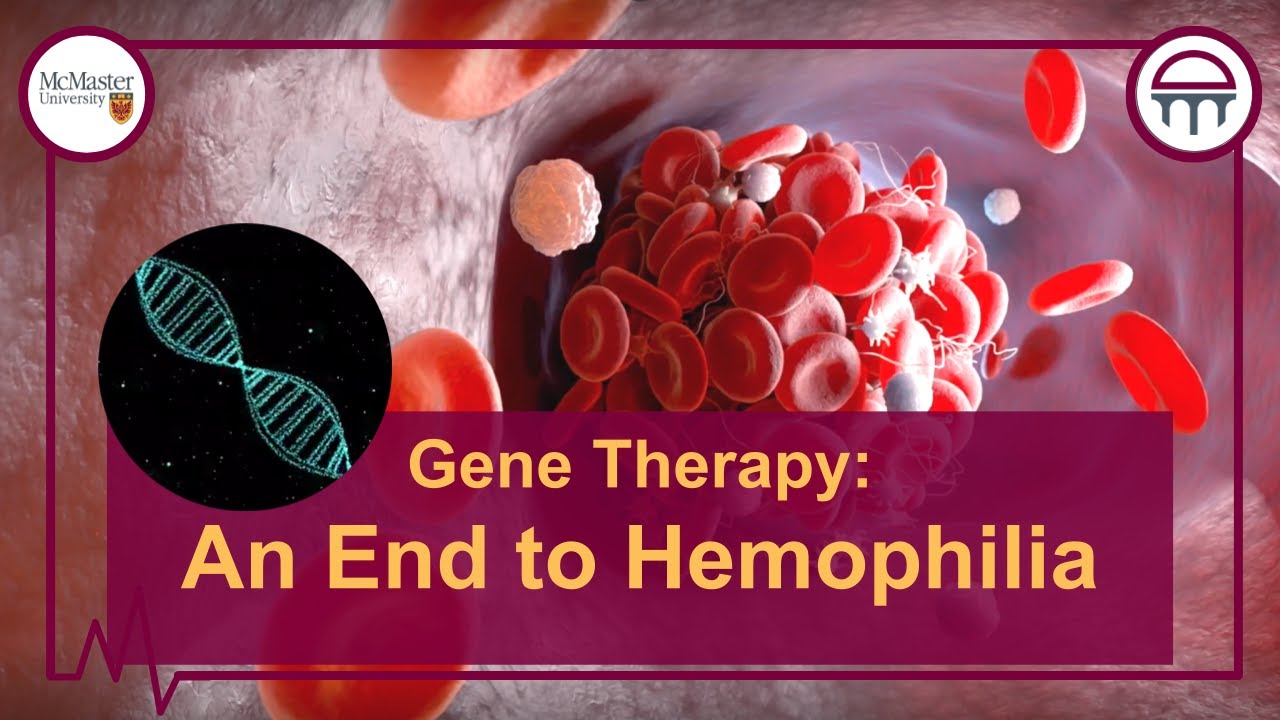Example punnet square for sex-linked recessive trait | High school biology | Khan Academy
Summary
TLDRThis instructional video script explains hemophilia, an X-linked recessive trait affecting blood clotting. It details the genetic inheritance, using a carrier woman and a hemophiliac man as an example. The script guides viewers through understanding genotypes and Punnett squares to calculate the probability of their daughter having hemophilia, revealing a 50% chance if born female. It also addresses related inheritance probabilities, such as for hemophiliac sons and non-hemophiliac offspring.
Takeaways
- 🩸 Hemophilia is an X-linked recessive trait that affects blood clotting.
- 🧬 Individuals with hemophilia have a genetic condition where their blood has difficulty clotting.
- 👩👧 A carrier woman has one X chromosome with the hemophilia allele and one without, but does not exhibit the trait.
- 👨👦 A hemophiliac man has the hemophilia allele on his single X chromosome, leading to the expression of the trait.
- 🧬 The mother's genotype is represented as X^HX^h, indicating one dominant allele (H) and one recessive allele (h).
- 🧬 The father's genotype is represented as X^hY, indicating the hemophilia allele on the X chromosome and a Y chromosome.
- 🔍 To determine the offspring's genotype, a Punnett square is used to visualize the possible genetic combinations.
- 👧 Daughters are XX, so the scenarios with two X chromosomes are considered for determining if a daughter has hemophilia.
- 🤔 The chance of having a daughter with hemophilia, given a carrier mother and a hemophiliac father, is 50%.
- 👦 The chance of having a hemophiliac son is 25%, as only one scenario out of four results in a son with the condition.
- 👶 The overall chance of having a hemophiliac offspring is 50%, considering both sons and daughters.
- 👦 Given a son, there is a 50% chance that he does not have hemophilia, as only one scenario out of the two son scenarios results in a non-hemophiliac son.
Q & A
What is hemophilia?
-Hemophilia is an X-linked recessive trait that affects blood clotting, causing individuals with the condition to have difficulty with their blood clotting properly.
How does hemophilia inheritance work?
-Hemophilia is inherited in an X-linked recessive pattern, meaning it is more common in males and can be carried by females without them showing symptoms.
What does it mean to be a carrier for hemophilia?
-A carrier for hemophilia is a female who has one X chromosome with the hemophilia allele (recessive gene) but does not exhibit symptoms because the other X chromosome has the dominant allele.
What are the genotypes of a carrier woman and a hemophiliac man?
-A carrier woman has the genotype X^HX^h, where X^H is the normal allele and X^h is the hemophilia allele. A hemophiliac man has the genotype X^hY, with the Y chromosome being the male sex chromosome.
How can you determine the likelihood of a daughter having hemophilia using a Punnett square?
-By using a Punnett square, you can visualize the possible combinations of alleles that a child can inherit from both parents. In the case of a carrier woman and a hemophiliac man, the Punnett square will show the possible genotypes of their offspring.
What is the percent chance that a daughter of a carrier woman and a hemophiliac man will have hemophilia?
-There is a 50% chance that a daughter will have hemophilia, as she can either inherit the X chromosome with the hemophilia allele from both parents or only from her father.
What are the different scenarios for the offspring of a carrier woman and a hemophiliac man?
-The scenarios include a daughter with hemophilia (X^hX^h), a daughter who is a carrier (X^HX^h), a son with hemophilia (X^hY), and a son without hemophilia (X^HY).
What is the percent chance of having a son with hemophilia?
-There is a 25% chance of having a son with hemophilia, as only one of the four Punnett square outcomes will result in a son with the X^hY genotype.
What is the percent chance of having a non-hemophiliac son?
-There is also a 25% chance of having a non-hemophiliac son, represented by the X^HY genotype in the Punnett square.
What is the overall percent chance of having a hemophiliac offspring?
-The overall percent chance of having a hemophiliac offspring is 50%, as two out of the four Punnett square outcomes result in hemophilia.
Given that they had a son, what is the percent chance that the son does not have hemophilia?
-Given that they had a son, there is a 50% chance that the son does not have hemophilia, as one out of the two male scenarios results in a son without the condition.
Outlines

هذا القسم متوفر فقط للمشتركين. يرجى الترقية للوصول إلى هذه الميزة.
قم بالترقية الآنMindmap

هذا القسم متوفر فقط للمشتركين. يرجى الترقية للوصول إلى هذه الميزة.
قم بالترقية الآنKeywords

هذا القسم متوفر فقط للمشتركين. يرجى الترقية للوصول إلى هذه الميزة.
قم بالترقية الآنHighlights

هذا القسم متوفر فقط للمشتركين. يرجى الترقية للوصول إلى هذه الميزة.
قم بالترقية الآنTranscripts

هذا القسم متوفر فقط للمشتركين. يرجى الترقية للوصول إلى هذه الميزة.
قم بالترقية الآن5.0 / 5 (0 votes)






